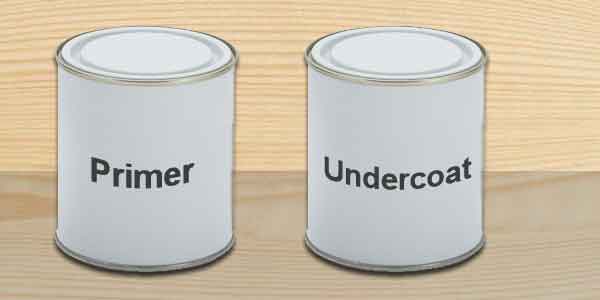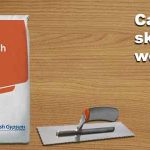Whether you are painting wood inside the home or outside, it is important that you use the correct primer and undercoat before painting.
If you are painting bare wood, you will need to use both primer and undercoat before you apply a topcoat. The primer will improve adhesion for your paint, and it will also reduce suction in the timber.
Wood is a porous material; this means it will soak up moisture that comes in contact with its surface. A primer will soak into the wood, which will reduce the suction when applying later coats.

Due to the grain and knots in wood, the rate of absorption will not be distributed evenly. It will happen at different rates across the woods surface.
The primer helps to fill these pores and gaps in the wood. Not only will this reduce absorption in later coats, but it will also create a more even surface for the paint to adhere to. This will ensure a smoother, better-quality finish.
If you fail to use a primer, the bare wood will suck moisture from the main coats of paint. This will result in a blotchy first coat, as the water absorbs into the wood. Following this, adhesion will be quite poor, and it is very common to see paint beginning to flake and peel after just 1-2 years.
After the primer has been applied to your bare wood, an undercoat will help to even out any small imperfections in the woods surface. This will create a perfect base for your final topcoats.
Preparing the wood before applying primer and undercoat
When working with new wood, it is advised that you prepare it before you start adding primer and other coats of paint. To do this, start by gently sanding the surface of the wood. This will smooth the grain slightly and remove any raised sections.
Only a light sand is required to remove any minor imperfections. Therefore, an 80-120 grit sandpaper will do the best job.
You should also identify any hole’s, dents, or larger imperfections in the timber face. These can be filled with a standard wood filler and sanded prior to painting.
Once your wood is nice and smooth, you should clean in order to remove all dust and debris.
Finally, before applying your primer, you may need to apply a protective solution to knots in the wood. Knotting solution is a shellac-based varnish, and its main function, is to stop sap from seeping through paint work. If you don’t cover the knots, sap is very likely to seep through, and this will show through the finished coat of paint.
You can also get shellac-based primers such as Zinsser BIN which you can see here. This can be applied in the same way over knots. After this the wood can be finished with a standard latex or oil-based primer.
Once your primer has dried (this will take longer for oil-based primers), you can apply your undercoat and finally your topcoats can be applied.
When do you not need a primer
You should always use a primer if you are painting onto bare wood. However, if you are painting onto wood that has been painted in the past, a primer will not be required. In this situation, you can simply sand the surface and apply an undercoat prior to painting.
The undercoat will add a base for the topcoat and can be very good for covering up old colours. This is especially true for darker colours, which will often show through finished paint if an undercoat is not used.
Conclusion
There are many situations where you may need to paint wood. Internally this will often include things like:
- Doors and door casings
- Skirting and architraves
- Staircases, banisters, and newel posts
- Etc
All of the above will require some kind of primer and/or undercoat.
Several of these products can often be purchased with a primer already applied. This can be a big help, as it saves time, and means you don’t need to apply as many coats.
For anything that is made with pine or MDF, there is often a ready primed version, and generally the price is very similar to bare wood. Therefore, if you have the option, save your self some time and money, by purchasing materials with a primer already applied.
If you do buy bare wood, you will first need to ensure knots are dealt with, and the wood is filled and sanded to a smooth finish. Following this you can add primer, followed by undercoat, followed by a topcoat.
There are also times where you will be painting wood outside. In these situations, you will still need to prime and undercoat the wood you intend to paint.
The only difference, is you will be working with different types of exterior paints.
These exterior primers and undercoats tend to emit far more fumes. As a result, they are not suitable for internal use.



